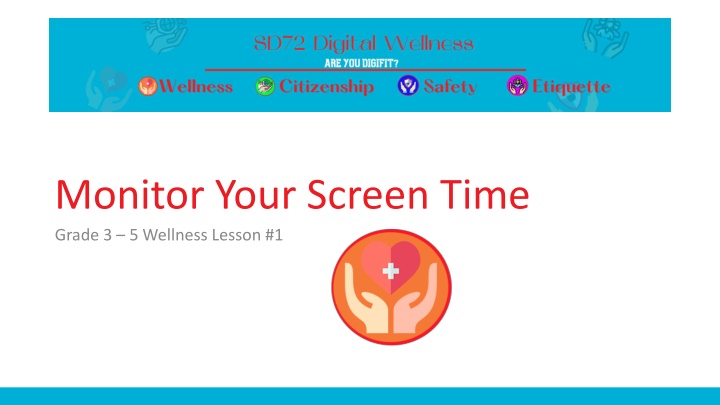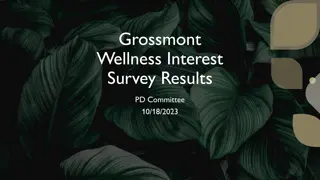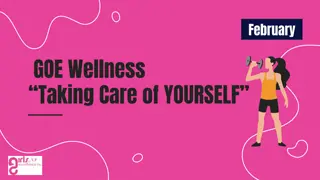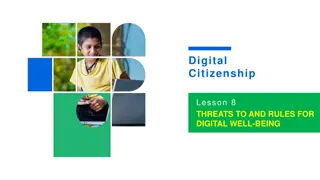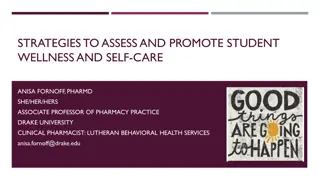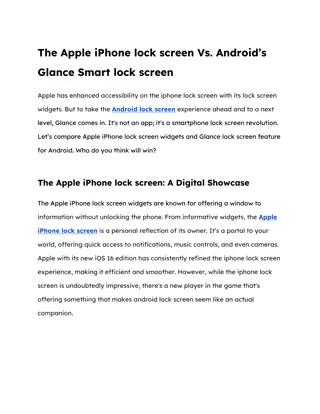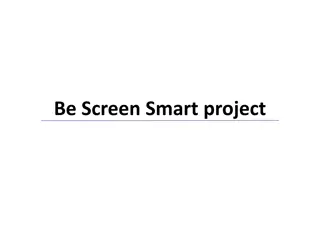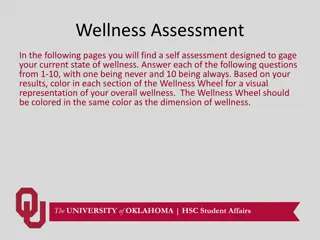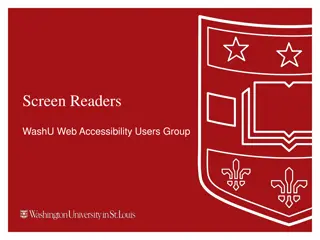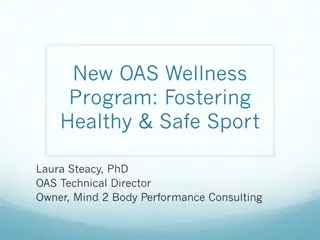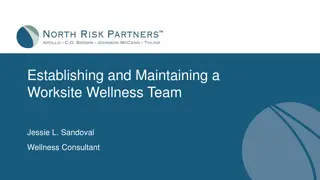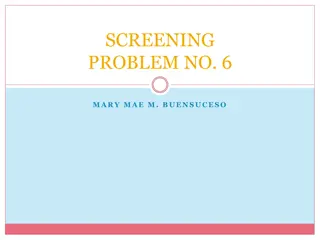Digital Wellness and Screen Time Management for Grade 3-5 Students
Encouraging students to maintain a balance between digital and face-to-face interactions, this lesson focuses on digital wellness, responsible citizenship, online etiquette, and safety. It emphasizes the importance of creating a balance with screen time and engaging in various activities, including active, learning, and screen time. Students are prompted to differentiate between healthy and unhealthy screen time choices and consider the impact of their digital interactions.
Download Presentation

Please find below an Image/Link to download the presentation.
The content on the website is provided AS IS for your information and personal use only. It may not be sold, licensed, or shared on other websites without obtaining consent from the author.If you encounter any issues during the download, it is possible that the publisher has removed the file from their server.
You are allowed to download the files provided on this website for personal or commercial use, subject to the condition that they are used lawfully. All files are the property of their respective owners.
The content on the website is provided AS IS for your information and personal use only. It may not be sold, licensed, or shared on other websites without obtaining consent from the author.
E N D
Presentation Transcript
Monitor Your Screen Time Grade 3 5 Wellness Lesson #1
Digital Wellness Big Idea Ensure students, at every grade level, have the tools, resources, and skills to interact personally, socially, and educationally in the real world and in digital spaces. Encourage all students to make safe, healthy, and positive decisions to live a digitally balanced life in our technology-rich world.
WELLNESS = BALANCE IS BEST I will maintain a balance between digital and face-to face interactions in life. Digital wellness refers to the state of one s physical and mental health in the Digital Age. It is making intentional decisions to improve the healthy use of technology. This does not mean eliminating technology from our lives BUT to balance its use with healthy face- face interactions. CITIZENSHIP = BE THE BEST YOU I will be responsible, ethical, honest and literate in today s digital world. ETIQUETTE = IT S COOL TO BE KIND I will choose to be positive with others online. SAFETY = BE AWARE I will be safe online and protect private information.
PREPARATION Video: Balance is Important: Link in Slide #6 Posters made up with the following headings: Active; Learning; ScreenTime Photocopy student handout: Link in Slide #9 Book: But it s Just a Game by Julia Cook 4
LEARNING INTENTIONS 1-1 Creating a Balance with Screen Time CREATE A BALANCE Learn to participate in different types of activities each day Learn to find balance in the types of activities they participate in Differentiate between good and bad types of screen-time 5
ACTIVATE - VIDEO Watch ONE of the videos below by clicking on the image. Media Balance is Important (1:57) My Media Balance (1:18)
AQUIRE - BRAINSTORM ACTIVE LEARNING SCREEN TIME Activities can be broken down into THREE different types: active, learning and screen time. Brainstorm with your teacher different activities for each of these headings.
DISCUSS . . . Did you notice the different TYPES of screen time that were listed? Are ALL types of screen-time bad? How are some screen-time choices more healthy or less healthy than others?
APPLY - RECORD Using the handout provided, fill out the type of activities you did over the last week. Put a check mark beside each activity for every day you did it. Balance Handout
APPLY - EVALUATE Hold your completed balance wheel in front of you . . . Spin it until the section with the most activities or check marks are on the bottom. Ask yourself am I demonstrating a balance with screen-time is my screen-time use something that could be considered good is my screen-time too much towards the bad use What does media balance look like for you?
READ But it s Just a Game by Julia Cook Meet Jasper! A young boy who is totally absorbed with playing video games "With my game controller in my hands, I'm the boss of my whole world! I can be who I want and do as I please. I can get the highest score. I get all the chances that I need. If I make a mistake it's ok. Everyone thinks I'm 'it on a stick!' And the bad stuff all goes away" Video game addiction is on the rise, but it can be prevented. This creative story book teaches both kids and adults how to switch out their game controller for a "life controller." Video gaming is becoming a part of our culture, and we must be strategic in creating a healthy gaming balance. Online Story
Teacher Notes Extension Family/Home Tips This lesson is a great visual way for students to determine how balanced their screen- time usage is. It also allows for a discussion to occur around HEALTHY screen-time not only in duration BUT in the choice of the type of screen-time that is chosen. Media Choice Tracker Reflecting on my Media Play Digital Passport game, Twalkers Help Kids Balance Their Media Lives Family Activity How to Set Screen Rules that Stick
